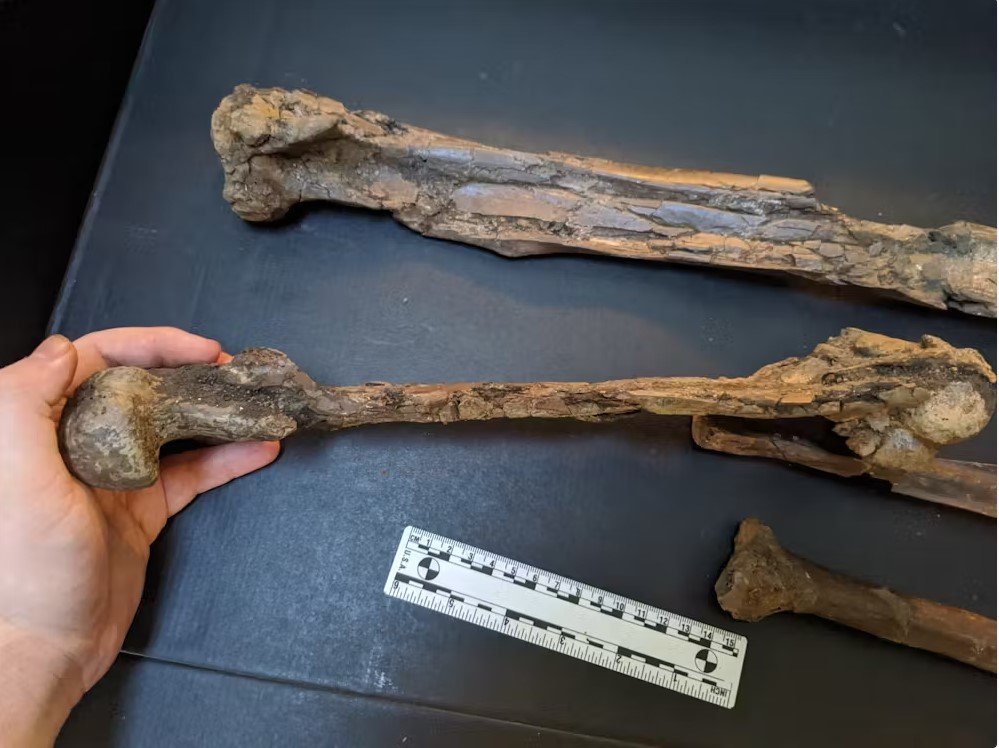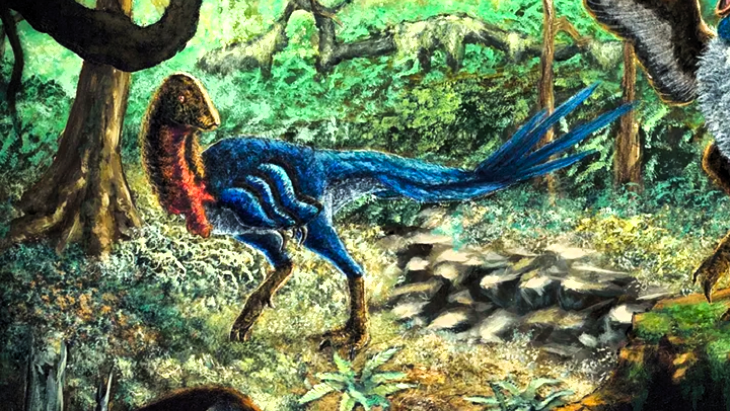In a recent discovery that’s stirring up more than just dust in the world of paleontology, scientists have unearthed a new species with a name straight out of a B-movie: the “Hell Chicken.” Unearthed from the depths of the Hell Creek Formation in South Dakota, this ancient creature may just change the story of dinosaur diversity before their curtain call at the end of the Cretaceous.
According to the study, the newly christened Eoneophron infernalis, or “Pharaoh’s dawn chicken from Hell,” belongs to the caenagnathids – birdlike dinosaurs with toothless beaks, skinny long legs, short tails, and feathers that could make any modern bird envious. Initially mistaken for a juvenile of its notorious cousin, Anzu (the original “chicken from Hell”), this new find turned out to be a full-grown, distinct species- that stood at about the same size as a modern-human.


For a long time, paleontological research had most scientists believing that these creatures were on a decline before the Dino-killing asteroid made its grand, fiery entrance 66 million years ago. However, Eoneophron infernalis throws a wrench in this narrative. Its bones, telling a story through lines of arrested growth (nature’s version of annual rings), reveal it was living its best life as an adult, not a juvenile. This insight suggests the dinosaur diversity storyline might need a rewrite, as there may be some unseen diversity here.
This birdlike creature, smaller than its cousin Anzu but with its own unique bone features, suggests that the late Cretaceous was a bustling metropolis of varied, adaptive species. This diversity points to a healthy ecosystem. The method of unmasking Eoneophron infernalis is a reminder of paleontology’s version of a closet clean-out: reexamining what we already have can lead to surprising discoveries. The “Hell chicken” was a brand new species.
Eoneophron infernalis, not wanting to be upstaged by Anzu, flaunts its own unique features. With fused ankle bones and a ridge on its foot bone, the skeleton indicates that this wasn’t your average “chicken from Hell.” This discovery adds a new branch to the caenagnathid family tree, suggesting a more diverse cast of bird-like dinosaurs in the late Cretaceous than previously thought.
While this finding challenges the old narrative of a dinosaur decline and suggests a vibrant, diverse ecosystem right up until that asteroid ended it all, it’s a reminder that in paleontology, as in any good mystery, things aren’t always as they first appear.
MJ Banias is a journalist who covers security and technology. He is the host of The Debrief Weekly Report. You can email MJ at mj@thedebrief.org or follow him on Twitter @mjbanias.

